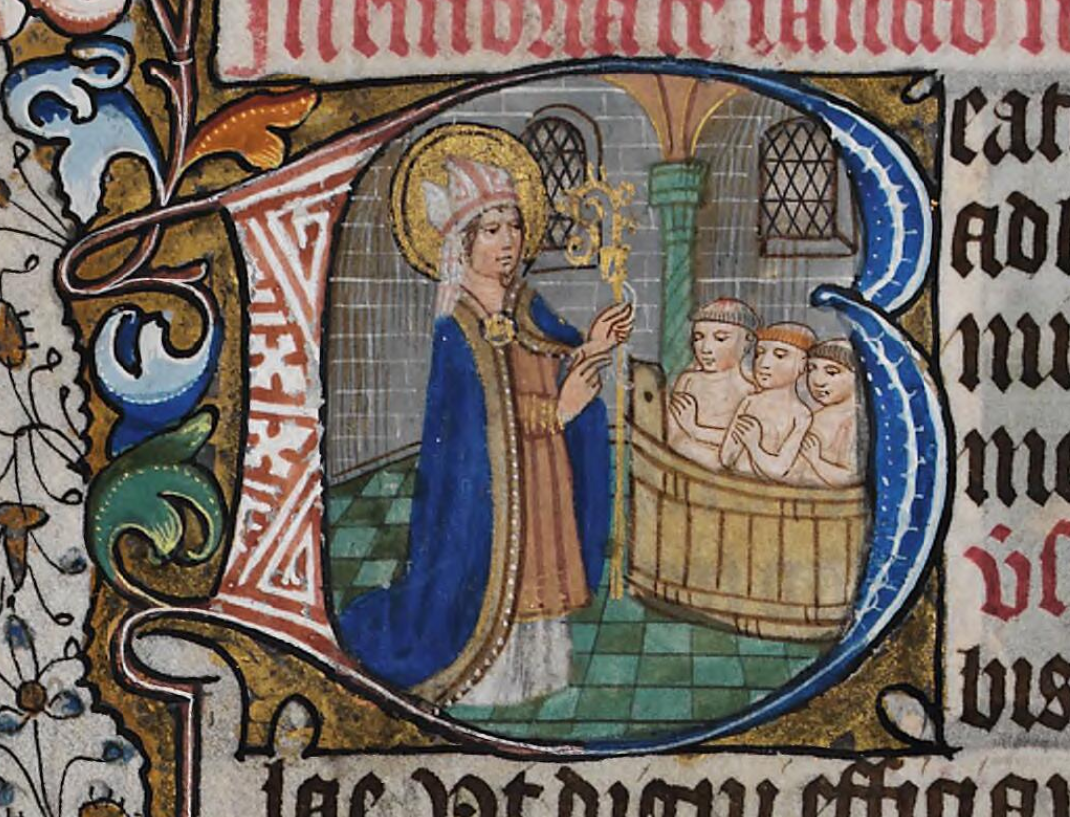Christmas Services at Gloucester Cathedral.
Available at
unless stated otherwise.
In the 5th-Century A.D., the opening date of The Ecclesiastical Year was The Feast of The Annunciation which, originally kept in March, was later transferred to December.
“Following what is the practice elsewhere,”, says The Council of Toledo in 665 A.D., “The Annunciation will be kept throughout Spain on 18 December, since, at present, it often falls in Lent or at Easter.”
In the 10th-Century A.D., The Ecclesiastical Year began on The First Sunday of Advent, some weeks before Christmas.
As early as 380 A.D., a Council of Saragossa decreed an eight days' Preparation for Christmas.
At The Council of Tours (563 A.D.), Advent is referred to as: “A Liturgical Period having its own Proper Rites and Forms”.
In The Nestorian Liturgy (6th Century A.D.), Advent lasted for four Sundays, called “Sundays of The Annunciation”, and, in The Ambrosian Liturgy and The Mozarabic Liturgy, six Sundays were reckoned.
In The Roman Liturgy, we find that, at first, Advent lasted five weeks [The Collect and Gospel of The Last Sunday After Pentecost (at a certain time the first of The Five Advent Sundays) have kept much of the character of this Season].
At present, The Roman Liturgy includes four Sundays: The First Sunday of Advent is always the Sunday next to Saint Andrew's Feast Day, which is kept on 30 November.
The joy of beholding the speedy coming of Christ is one of the dominant notes of Advent; restrained, at first, but quickly taking free course and rising to the fervour of The Christmas Spirit. At the same time, the thought of The Purification of Souls, closely connected with that of the return of Christ, occurs at this time, on every page of The Breviary and The Missal.
Hymns, choice of Psalms, the Preaching of The Prophets and of The Forerunner of Christ, The Collects of The Four Sundays, the oft-repeated Versicle: “Rectas fácite sémitas ejus,” [“Make straight His paths”]; all these speak of the necessity of preparing our Souls for the approach of Our Redeemer in His twofold coming.
“Do Penance,” said Our Lord, “for The Kingdom of Heaven is at hand” [Antiphon, Ben., Monday, Fourth Week in Advent].
In The Middle Ages, a Fast was prescribed during Advent, known as “The Christmas Lent”, when it was even the custom to veil images, as at Passiontide. In our times, Purple Vestments are still used, as in Lent, and the “Benedicamus Domino” replaces the “Ite Missa Est”.
During Advent, the Antiphon “Alma Redemptoris Mater” is sung with its accompanying Versicle “Angelus Domini”, while The Second Prayer is The Collect of The Mass “De Beata”, chosen on account of the part played by Our Lady in The Mystery of The Incarnation with which, for the time being, The Church is concerned.
For the present, we hear no more the “Gloria in Excelsis”, for that is The Angels' song of The Nativity, and this new Ecclesiastical Year, just beginning, it is at Christmas that it must be heard for the first time.



































